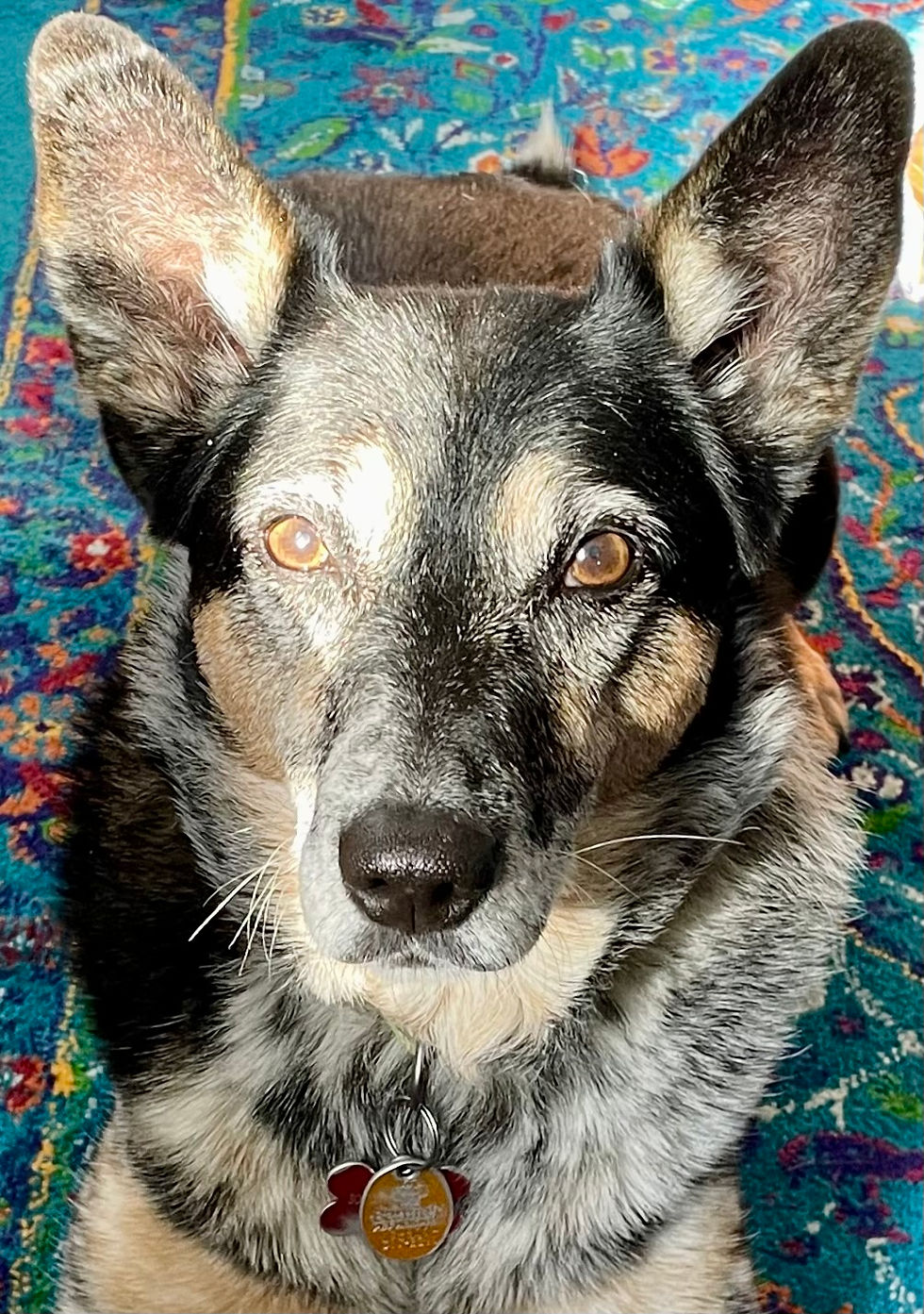On-Leash Behavior Problems
- Virginia Dare

- Apr 15, 2020
- 3 min read
Updated: Oct 1, 2021
It's not uncommon for dogs to develop undesirable behaviors when out on leash, like lunging or barking or growling at other dogs. We trainers often refer to this as reactive behavior, or reactivity. There are a variety of reasons a dog may do this. Below are some examples I run across regularly in my work with clients, and I've included one example of my own dog, too.
I meet many puppies who are extremely social, and they become wildly excited when seeing another dog during leash walks. In a perfect world, the puppy's owner would address this early on by focusing on teaching loose leash walking. Some pointers can be found in another article.

Unfortunately, what often happens instead is the owner permits super-excited pup to pull over to every other dog he sees. The owner doesn't realize this can lead to negative outcomes, such as:
Puppy learns pulling on leash is a very successful strategy to get where he wants to go, thus solidifying this pulling behavior. And as puppy grows, this pulling strength can be quite a challenge for the owner.
Puppy arrives and then has some rowdy playtime with the other dog, thus further fueling his overly excited behavior for the next encounter.
Puppy arrives and the other dog finds this space-invasion upsetting, and may react in a negative way (bark, lunge, growl, air-snap, pin the puppy to ground, or bite). Puppy may then learn to either be frightened of other dogs, or may become defensive himself with continued exposures like this.
In another scenario, the exuberant behavior of a dog on leash (pulling, leaping, whining or barking) may lead his owner to use punitive equipment (choke, prong, or shock collar) or leash corrections in an attempt to stop the unwanted behavior. Unfortunately, I often see unintended fall-out from these corrective techniques. The excited dog learns that seeing other dogs is now a predictor of pain/punishment, and over time they can develop a negative emotional response to other dogs. This is how many reactive dogs are born.
Yet another situation is rooted in fearfulness. The dog on leash is fearful of other dogs, but being on leash limits any distance-increasing options, and inhibits natural body language communication. A fearful dog who repeatedly experiences other dogs invading his space may resort to proactively signaling a "stay away!" message, and that message often includes barking, growling, lunging or even biting.
Now I'd like to share a personal experience. I adopted WildeBean, an 8 lb. Chihuahua, when she was 3-4 years old. I don't know much about her history except that she got along with nice dogs in her foster homes. I did observe, early on, that she displayed fearful body language when unknown dogs approached her while out on leash. She didn't vocalize at them, just tried to keep away from them. She was like this for the first year I had her.
But also during that first year, when outside in my fenced yard, she regularly saw dogs walking by. With the safety of the fence between her and the unknown dogs, she very gradually got bolder and started barking at them. (So foolish of me to have allowed this rehearsal!) I imagine that barking felt good to her because the dogs would walk away. Doesn't matter that they were going to walk away with their owners anyway. To WildeBean, her barking caused them to go away. Ah, that's reinforcing!! Once this barking behavior developed in the yard, she began rehearsing more offensive signals while on leash, too, including a bit of barking and a desire to charge toward another dog. She was still the same fearful dog at the core, but she'd learned more proactive strategies to warn unknown dogs away.
The good news is this reactive, on-leash behavior is resolvable with a carefully designed, reward-based training plan. In simple terms, this involves managing distance, creating safe exposures, and pairing dog sightings with high-value treats. Over time and with consistent repetition, we can help the dog develop a more positive emotional response to seeing other dogs during walks. That means a more relaxed and better-behaved dog, and walks that are a whole lot more enjoyable for us, too!
If you need some help now with leash walking, reactivity, or other doggie issues, I'd love to help, and am offering remote video consultations.
STAY HEALTHY!
Virginia Dare is a certified dog trainer & behavior counselor with decades of experience. Her business offers remote consultations anywhere in the US for training and behavior help, matchmaking services, and pre- and post-puppy arrival counseling. She also provides in-home, private lessons and behavior consultations in northern Fairfield and Westchester counties, western New Haven county, Putnam and southern Dutchess counties.
Please visit www.NorthStarCanines.com/services to learn more, or contact me at 804.784.0120



Comments